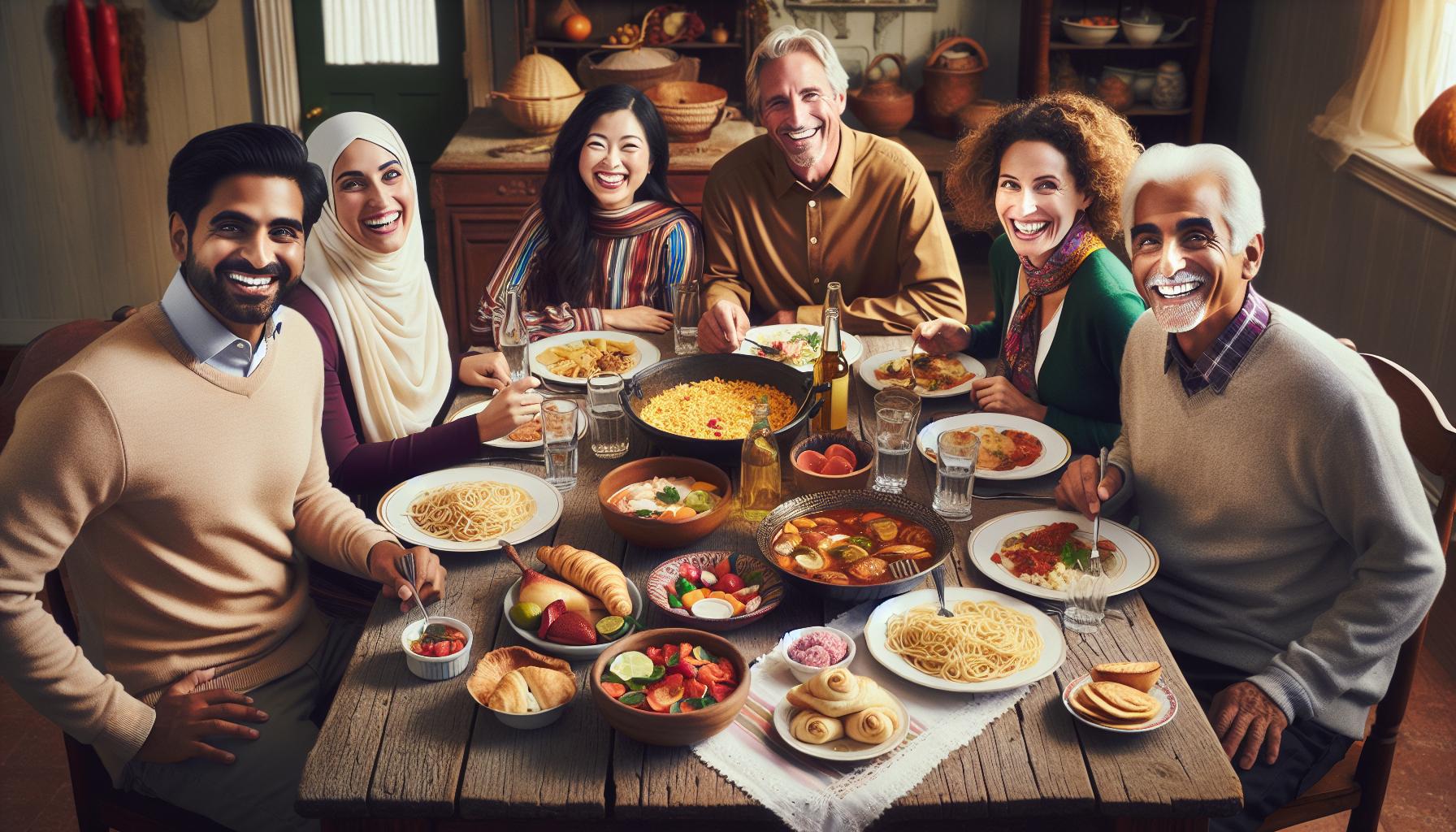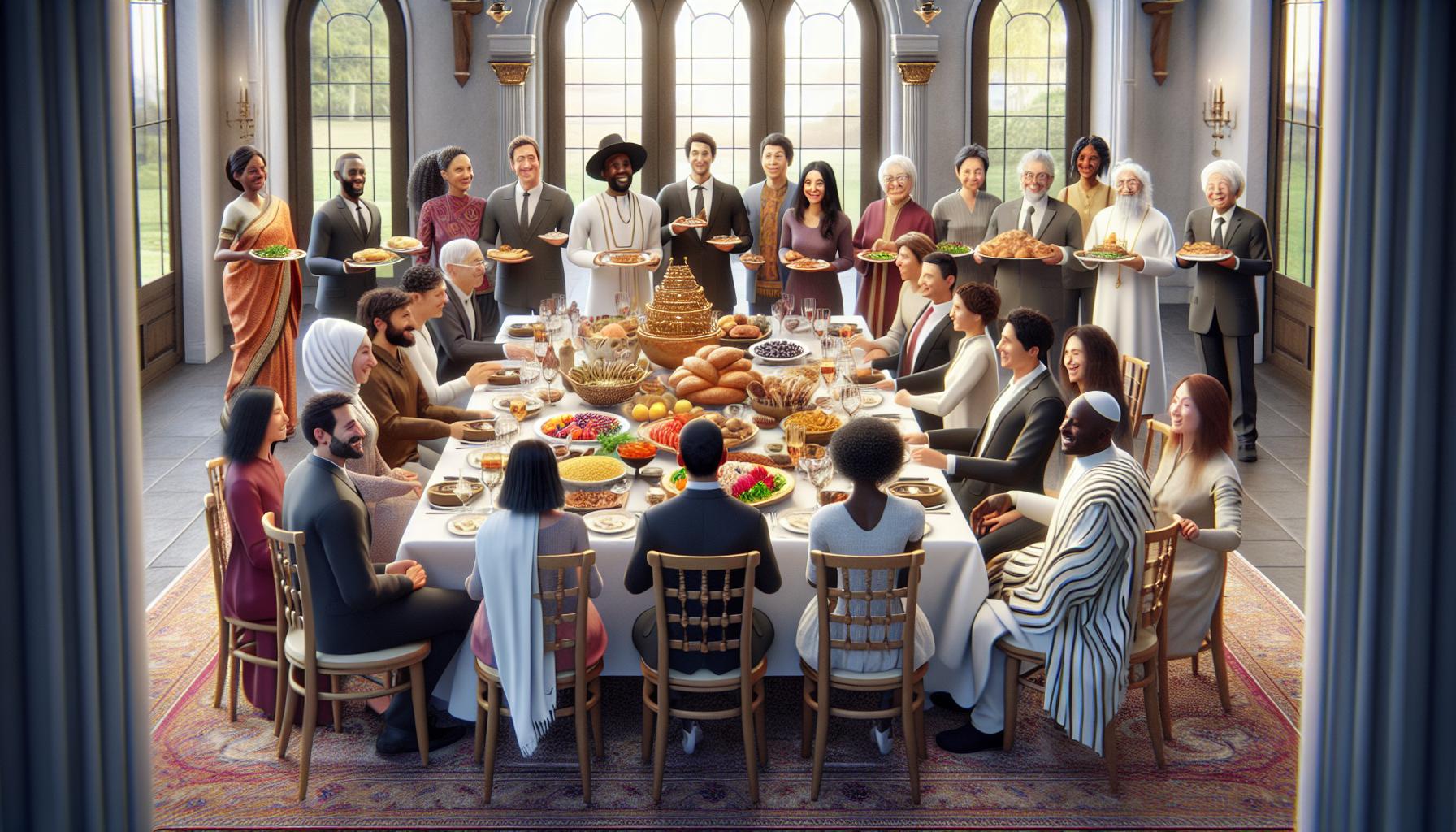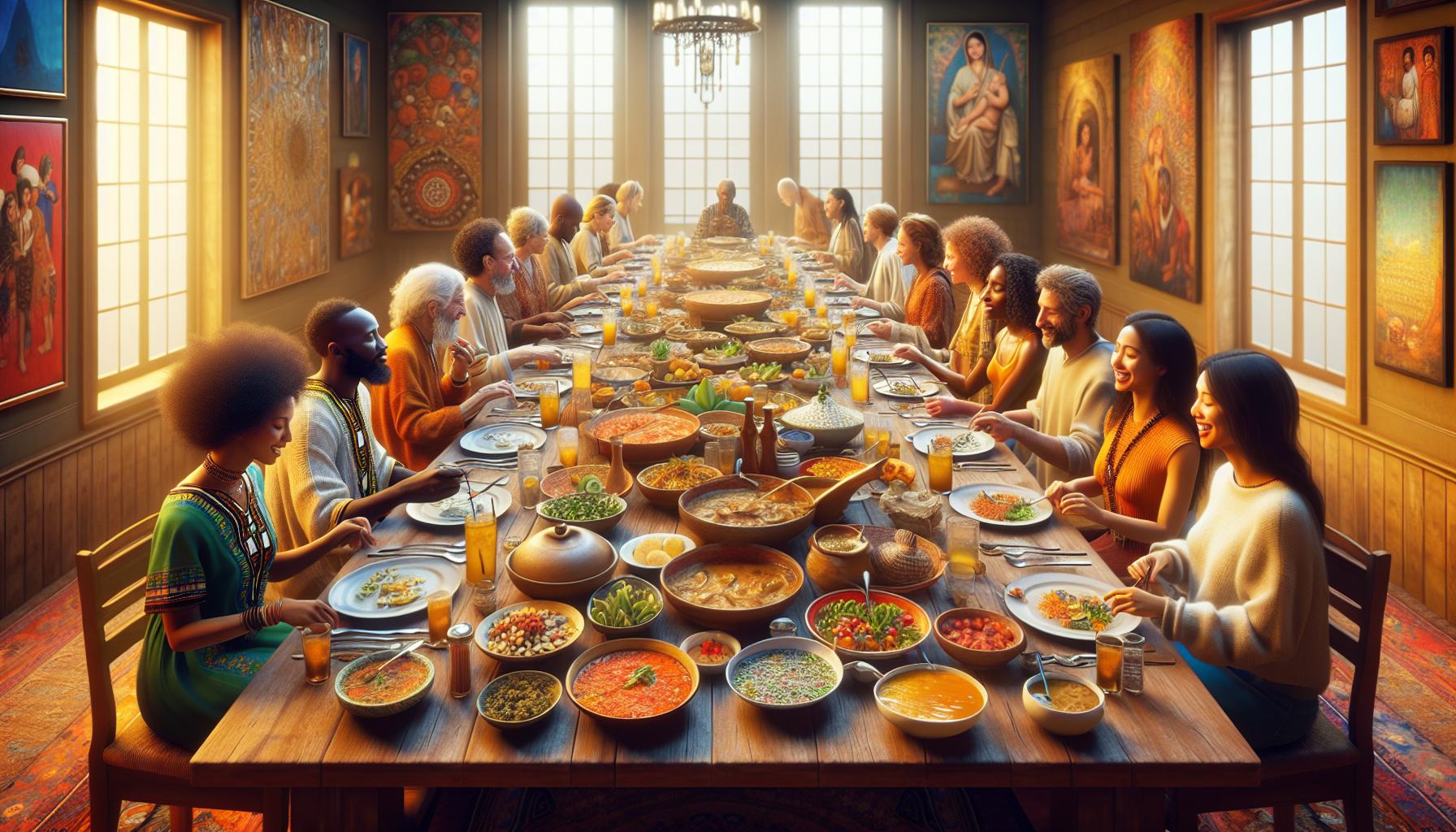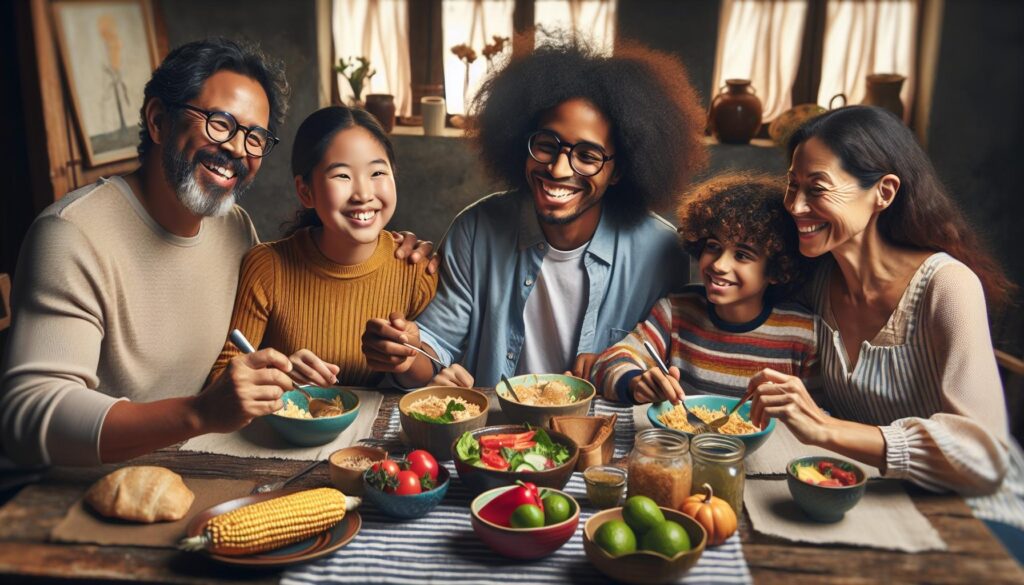Food isn’t just sustenance – it’s a window into the soul of every culture on Earth. From the spicy streets of Bangkok to the cozy bistros of Paris each bite tells a story of tradition history and human connection. The way people prepare serve and share their meals reveals volumes about their values beliefs and way of life.
Throughout history food has served as a universal language bringing communities together and bridging cultural divides. Whether it’s passing down secret family recipes or gathering for festive holiday feasts culinary traditions shape social bonds and preserve cultural heritage. Today’s global food scene reflects an increasingly interconnected world where fusion cuisines and cross-cultural dining experiences have become the norm.
Culture and Food
Food rituals reflect deep-rooted cultural values across different societies. Chinese families gather around circular tables for dim sum, sharing small plates that symbolize unity. Italian communities celebrate life milestones with multi-course meals featuring regional specialties like handmade pasta or risotto.
Religious practices shape dietary customs in numerous cultures:
- Kosher laws guide Jewish food preparation
- Halal requirements influence Muslim dining choices
- Hindu beliefs promote vegetarian traditions
- Buddhist principles emphasize mindful eating
Traditional cooking methods preserve cultural heritage through generations:
- Japanese tea ceremonies utilize specific preparation techniques
- Mexican mole sauces combine indigenous ingredients
- French cuisine follows classical cooking hierarchies
- Indian spice blending follows ayurvedic principles
| Region | Significant Food Ritual | Cultural Meaning |
|---|---|---|
| Japan | Tea Ceremony | Harmony & respect |
| Mexico | Day of the Dead offerings | Honoring ancestors |
| India | Eating with right hand | Spiritual purity |
| Morocco | Communal tagine dining | Family bonds |
Food ceremonies mark important life events across cultures. Greek Orthodox baptisms feature honey-dipped almonds symbolizing fertility. Korean first birthdays celebrate with rice cakes representing prosperity. Spanish quinceañeras serve elaborate multi-tiered cakes marking transition to womanhood.
- Mediterranean olive oil reflects coastal agriculture
- Asian fermented sauces embody preservation techniques
- African palm oil showcases tropical resources
- Nordic preserved fish demonstrates climate adaptation
Food as a Language of Heritage

Food serves as a living archive of cultural heritage, passing down stories, values, and traditions through generations. The preparation and sharing of meals create lasting connections between past and present, forming an integral part of cultural identity.
Family Traditions and Recipes
Family recipes encode generations of cultural wisdom through specific ingredients and techniques. Great-grandmothers’ handwritten recipe cards preserve authentic cooking methods, from Italian pasta-making to Greek baklava assembly. Each family develops unique variations of traditional dishes, such as personalized spice blends in Indian curry recipes or secret ingredients in Mexican salsas. The process of cooking these ancestral recipes creates opportunities for elders to share family histories while teaching younger generations. Regular family gatherings center around signature dishes that mark special occasions, like Japanese osechi for New Year or Polish pierogi during Christmas Eve.
Cultural Identity Through Cuisine
Regional cuisines reflect the collective experiences of communities through distinctive flavor profiles and cooking methods. Vietnamese pho carries the influence of French colonization while incorporating local herbs and spices. African American soul food tells stories of resilience through the creative use of available ingredients during times of scarcity. Native American tribes maintain their heritage through traditional food preservation techniques like smoking salmon or drying corn. Immigrant communities strengthen their cultural bonds by establishing ethnic grocery stores and restaurants in new countries. Local food festivals celebrate these culinary traditions, from Chinese moon cake festivals to Mexican Day of the Dead offerings.
Sacred and Religious Food Practices

Religious beliefs shape dietary practices across cultures, establishing rules about food consumption that reflect spiritual values. These practices create distinct culinary traditions that strengthen community bonds and preserve cultural identity.
Dietary Laws and Restrictions
Religious dietary laws establish specific guidelines for food preparation and consumption. Judaism’s kosher laws prohibit mixing meat with dairy and require specific slaughter methods for animals. Islamic halal regulations mandate the exclusion of pork products and alcohol while specifying proper animal slaughter techniques. Buddhist traditions emphasize vegetarianism to practice non-violence toward living beings. Hindu dietary customs vary by region and sect, with many practitioners avoiding beef due to the cow’s sacred status. These regulations influence daily meal preparation, restaurant choices and grocery shopping patterns among adherents.
Ceremonial Foods
Religious ceremonies incorporate specific foods that carry symbolic meanings. Greek Orthodox Christians prepare koliva (boiled wheat with nuts) for memorial services. Jewish Passover seders include matzo bread to commemorate the Exodus from Egypt. Hindu prasad offerings consist of sweetened rice or fruits presented to deities during worship. Muslim communities break their Ramadan fast with dates following Prophet Muhammad’s tradition. Buddhist temples serve lotus-shaped treats during Vesak celebrations to represent spiritual purity. These ceremonial dishes connect practitioners to their faith through shared consumption and ritual preparation methods.
The Social Aspect of Dining

Dining practices create meaningful social connections through shared meals across cultures. The act of eating together strengthens family bonds community relationships through ritualized gatherings.
Communal Eating Customs
Mediterranean cultures embrace long family-style meals where dishes pass from person to person at the table. Asian societies celebrate togetherness through shared dishes placed at the center, like Korean banchan or Chinese lazy susans. Middle Eastern communities gather on floor cushions around a common platter, fostering intimacy during meals. African cultures emphasize community through ceremonial sharing of one large communal bowl. Latin American families maintain sobremesa, extending mealtime conversations long after plates clear. Japanese izakaya traditions encourage small plate sharing while sitting in close proximity. These customs transform everyday meals into opportunities for strengthening social bonds through food-centered interaction.
Table Manners Across Cultures
Different cultures follow distinct dining etiquettes that reflect their values. Japanese customs emphasize saying “itadakimasu” before meals holding chopsticks correctly. European traditions dictate specific utensil placement fork positions. Middle Eastern practices include eating with the right hand only showing respect for hosts. Chinese customs involve rotating lazy susans clockwise serving others first.
| Culture | Key Table Manner | Significance |
|---|---|---|
| Japanese | Chopstick positioning | Shows respect for food |
| Indian | Right hand eating | Maintains cleanliness |
| French | Fork tines down | Displays refinement |
| Thai | Spoon as primary utensil | Reflects rice-based cuisine |
| Ethiopian | Hand feeding others | Demonstrates care connection |
Food in Cultural Celebrations
Cultural celebrations center around distinctive dishes that carry symbolic meanings and traditional significance. These foods connect generations through shared experiences and reinforce cultural identity during special occasions.
Holiday Dishes
Traditional holiday foods mark significant dates on cultural calendars with specific ingredients and preparation methods. Chinese New Year features dumplings symbolizing wealth while American Thanksgiving celebrations include roasted turkey representing abundance. Easter brings hot cross buns in Christian communities and Hanukkah celebrations feature latkes in Jewish homes. The Japanese welcome the New Year with ozoni soup containing mochi rice cakes for good fortune. Mexican Christmas celebrations include tamales wrapped in corn husks signifying family unity. Each holiday dish preserves cultural heritage through recipes passed down across generations creating lasting memories through taste and tradition.
Festival Foods
Cultural festivals showcase unique culinary creations tied to seasonal celebrations and community gatherings. Indian Diwali features sweet mithai treats shared among neighbors as symbols of prosperity. Japanese matsuri festivals offer street foods like yakitori skewers and takoyaki octopus balls. Thai Songkran celebrations include som tam papaya salad and sticky rice dishes shared during water festivals. Brazilian Carnival features specific dishes like feijoada served during street parades. Greek festivals showcase souvlaki and baklava representing Mediterranean hospitality. These festival foods create community bonds through shared culinary experiences linking modern celebrations to ancient traditions.
Modern Food Culture and Globalization
Digital platforms transform traditional food cultures through social media sharing of global cuisine experiences. Instagram food photography connects millions of users worldwide, creating virtual communities centered around culinary exploration. Food delivery apps make international dishes accessible in urban centers, expanding local palates beyond traditional boundaries.
International restaurant chains adapt their menus to local tastes while maintaining global brand recognition. McDonald’s serves teriyaki burgers in Japan, masala options in India and halal meat in Muslim countries. Fusion restaurants blend culinary traditions, creating innovative dishes like Korean-Mexican tacos or Japanese-Peruvian ceviche.
Technology shapes modern food culture through:
- Digital food ordering platforms connecting consumers to diverse cuisines
- Recipe sharing websites preserving traditional cooking methods
- Virtual cooking classes enabling cross-cultural culinary education
- Food tracking apps promoting dietary awareness across cultures
Global food trends impact local eating habits:
- Plant-based diets gaining popularity across continents
- Street food culture spreading through food trucks
- Sustainable eating practices crossing cultural boundaries
- International supermarket chains stocking ethnic ingredients
- Cooking shows featuring global cuisines
- YouTube channels dedicated to traditional recipes
- Food documentaries exploring cultural food practices
- Social media influencers showcasing diverse eating habits
| Global Food Trend | Impact Percentage | Year |
|---|---|---|
| Online Food Delivery | 27% growth | 2022 |
| Plant-based Diet Adoption | 40% increase | 2021 |
| International Cuisine Consumption | 35% rise | 2023 |
| Cross-cultural Restaurant Concepts | 45% expansion | 2022 |
Food serves as more than just nourishment – it’s a powerful cultural force that shapes identities preserves traditions and connects communities worldwide. The intricate relationship between food and culture continues to evolve as globalization brings diverse culinary traditions together creating new fusion cuisines while maintaining traditional practices.
From religious ceremonies to family celebrations food remains central to human connection and cultural expression. As societies embrace both traditional foodways and modern innovations they’re creating a rich tapestry of global cuisine that honors the past while embracing future possibilities.
This dynamic intersection of food and culture demonstrates humanity’s remarkable ability to preserve heritage adapt to change and find unity through shared meals. It’s a testament to food’s enduring power as a universal language that transcends borders and brings people together.

